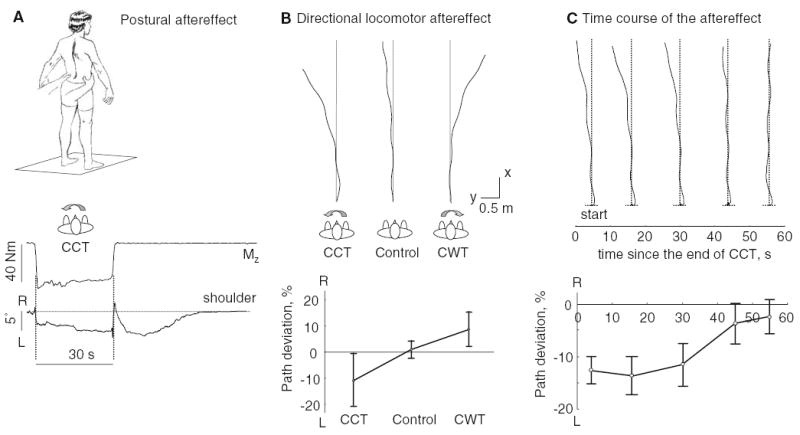Fig. 1.

Aftereffect of long-lasting (30 s) externally applied torsion on standing and walking. a An example of the postural aftereffect in one subject. From up to down: rotational torque (Mz) measured by the force plate and shoulder rotation (R right, L left). b Directional aftereffect of body torsion on walking trajectories. Path traces of a representative subject in three test conditions (CWT, CCT, and Control) and average path deviation (±SD, n=21, computed as a medio-lateral deviation of the trajectory during two strides divided by the path traveled) are shown. c Time course of the post-contraction effect on walking trajectories. Walking trajectories performed at different delays after the end of the CCT in a representative subject and average deviation of the trajectory as a function of time since the end of the CCT in six subjects are shown. Note a decay of the rotational aftereffect with time
